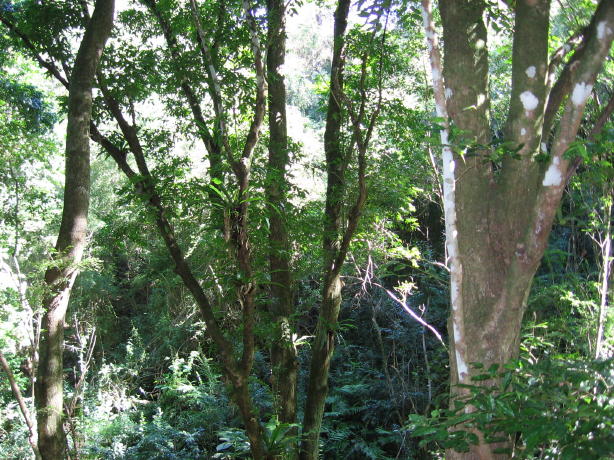Botanical name Emmenosperma alphitonioides
A common name Yellow Ash
Seedling
I have never actually seen what I might recognise as a Yellow Ash seedling yet. The smallest I have seen are young plants, .5 to 1.5 metres tall, as a trio along a hillside spaced about 50 metres or so apart. My guess would be one bird, plop plop plop.Young plant
This is a good example of a rainforest plant struggling on. When I found this one it may have been .5 of a metre tall with 6 leaves at the top of the skinny crooked little trunk. I had walked within 2 metres of it dozens of times before I saw it. The local habitat was Privett, both Small and Large leaf with a low coverstorey of Acacia melanoxylon perhaps 15 metres up.
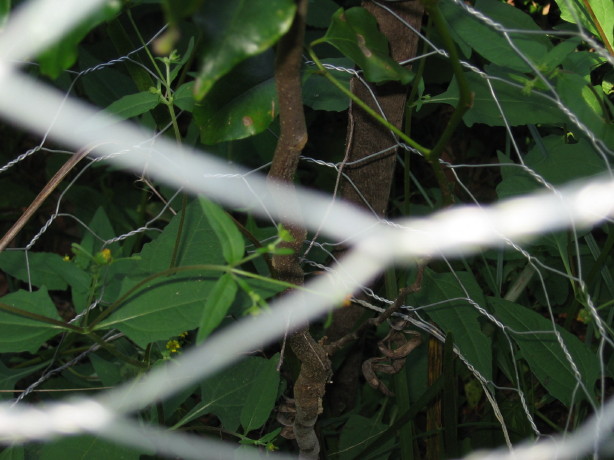
This is the same Yellow Ash as the one above.
Each one of the zigs and zags in this photo would have been just one flush of growth, some years there might be 2 or 3 flushes , some years 1, some none.
These are a tasty plant and shoots don't last very long below browse height.
Juvenile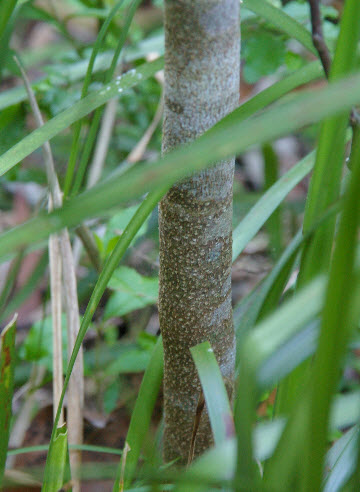
This is the same tree perhaps 3 years later, having been protected
from being eaten until the trunk was strong enough not be bent
over. The wiggles are just about all gone. The wallabies also seem to like young tender small leaf privett too, plenty of that. There are not many rainforest seedlings in this area so I cage most of them except for for those they rarely go for.
In other areas with high densities of seedlings I don't bother caging.
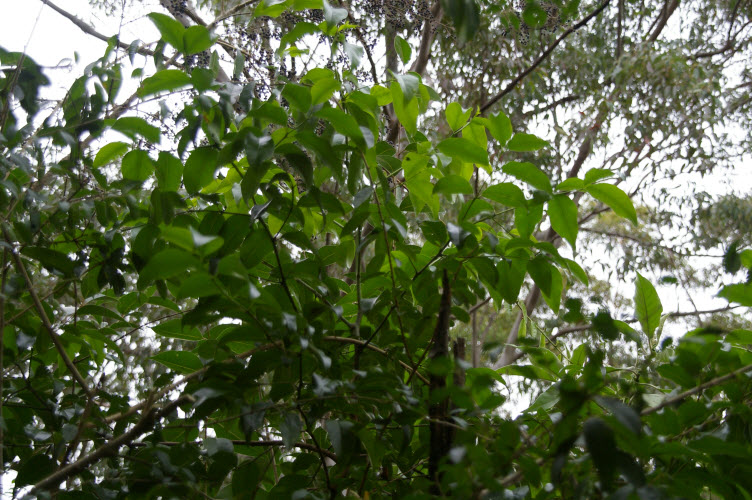
Emenosperma alphitonioides is quite prone to attack by borers.
The dead wood to the lower right of the healthy new growth used to be the main trunk, the lower of the two photos shows the sad condition of the trunk, though the sapling is healthy now.
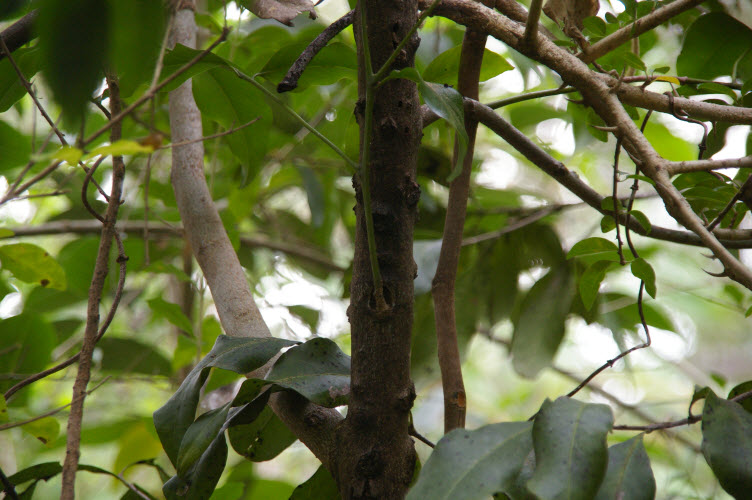
I have seen instances of trunks 75mm in diameter, about 4 metres tall, die back to ground level due to borers, this one was not a severe infestation.
Every part of the plant above the single green stem emerging from the centre of the trunk is dead or dying rapidly, that is why the large shoot is growing off to the left

